The First Capital of the Province of California
By Sam Herzberg, AICP, June 10, 2025
THE CITY OF LORETO
Loreto is a city and municipal seat of Loreto Municipality, Baja California Sur, on the West Coast of Mexico. Located on the Gulf of California, the city has a population of 28,000 in 2025. Loreto was founded in 1697, when Juan María de Salvatierra founded Misión de Nuestra Señora de Loreto Conchó. The city served as the first capital of the Province of California over 325 years ago.


The Loreto region is fortunate to have several NGOs. We had a report and presentation provided to us by Eco-Alianza’s Executive Director Carlos Posadas Solano at their office in Loreto. For many years now, Eco-Alianza Loreto has participated in strategic partnerships and has collaborated both in and out of the country, so in kind support is leveraged. They are also very involved with youth education in both urban and rural schools through science talks and workshops as well as university collaborations. The goal is more than simply preservation but ensuring the local communities in the upper and lower watersheds flourish in an environment rich in biodiversity. They work on the conservation of the Loreto National Park, protected areas, and internationally significant sites and coastal areas ensuring a future where nature and people grow together.
Loreto and Eco-Alianza have a long-standing relationship with the Sister Cities organizations in Hermosa Beach, CA and more recently with the city of Ventura, CA. Special thanks to Carl Morehouse, FAICP, former mayor of Ventura, and current director of the Sister Cities branches and Loreto resident, Liz Ramirez, a Hermosa Beach Sister Cities leader (formerly from Hermosa Beach) for providing us with introductions to Eco-Alianza and Conserva Loreto NGOs.
Northern planners and their spouses meet with Eco-Alianza staff. Left to right: Alex Hinds,
Juan Borrelli, AICP, Eco-Alianza Programs Assistant Irlanda Murillo Puente,
Eloisa Mendoza-Hinds, Elizabeth Tyler, FAICP, Sam Herzberg, AICP, Leslie Herzberg,
Hing Wong FAICP, Joan Ryan AICP, Kerry Salisbury, and
co-Alianza Executive Director Carlos Posadas Solano.
Photo credit: Juan Borrelli, AICP, April 2025

Carlos Posada Solano kindly gave an overview report of Eco-Alianza projects as well as the Bahia de Loreto National Marine Park which was created in 1997. The park protects almost 800 miles of mostly pristine ecosystem in the central Sea of Cortez, including five large uninhabited islands and many smaller islets in Loreto Bay. It is known for its great variety of coastal environments, such as sandy beaches, sea cliffs, submarine canyons, and marine terraces, and is home to an exceptionally high biological diversity, especially marine mammals for which this is a breeding area such as Blue, Fin, Humpback, Grey, and Killer whales, dolphins, porpoises, seals and sea lions. Because a National Marine Park was created, it has implications for all levels of the government related to water management, urban development, and waste management, there are limitations to tourism.
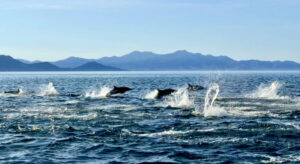

Eco-Alianza Loreto was created in 2008 with a focus on environmental education, natural resource conservation, and participatory communities. Example projects include sea turtle monitoring (May/June), and water quality monitoring. They are involved with significant international partnerships (15 agencies and municipalities), reducing reliance on plastics, creating field stations, and strengthening communication and collaboration with northern Mexico focused on scientific research. They also participate in urban development planning such as Loreto Vision 2025. They have worked with local fishermen to adopt voluntary limitations on fish catches to avoid further restrictions.
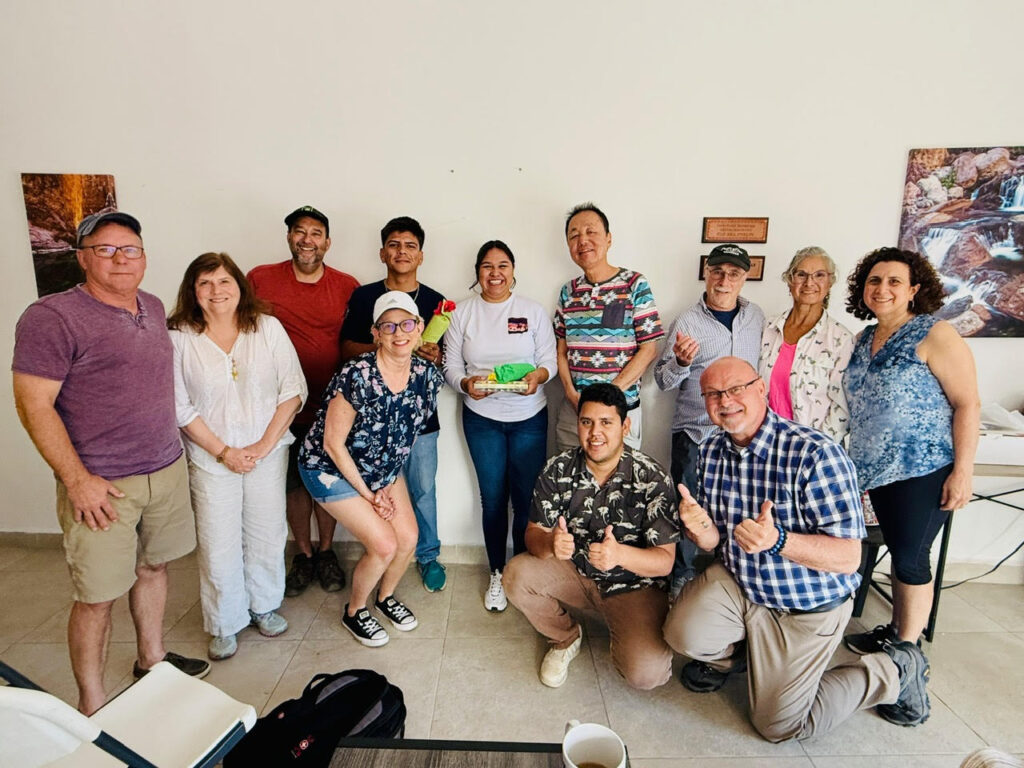
While in Loreto, we also had the opportunity to meet with Conserva Loreto, a newly formed NGO headed by Dr. Sula Vanderplank. Jennifer Ruelas gave us an overview and indicated they are funded by the Ocean Foundation to advocate for protection of the environment to the local community through science, education, and social justice in order to create a more sustainable future. The Ocean Foundation is working on 58 projects in 13 countries including the community of Loreto.
Northern Section planners and their spouses meet with Conserva Loreto Ocean Foundation staff. Left to right: Kerry Salisbury, Elizabeth Tyler, FAICP, Sam Herzberg, AICP, Joan Ryan AICP, Conserva Loreto Associate Elvis Soriano, Conserva Loreto Program Manager Jennifer Ruelas, Conserva Loreto Associate Jesús Adame, Hing Wong FAICP, Juan Borrelli, AICP, Alex Hinds, Eloisa Mendoza-Hinds, and Leslie Herzberg.
Photo credit: Juan Borrelli, AICP, April 2025
Conserva Loreto also has a working relationship with the President of Mexico who is committed to supporting communities and protecting biodiversity. Examples of Conserva Loreto’s work include holding citywide Bio Blitz’s of which data collected is entered into I Naturalist. They are also applying to be designated a Dark Star community, which ranks light pollution from 0 to 10 (0 is optimal), and Loreto currently ranks at 2.
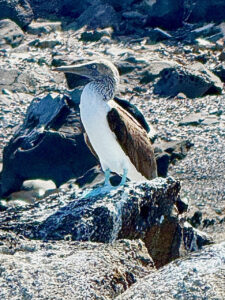
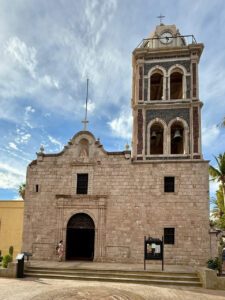
Staff from Conserva Loreto gave an overview of the solid waste and transportation issues as their local community population is 23,000 but they have an annual influx of 140,000 tourists for fishing and ecotourism. This community relies on walking, taxis, bicycles and very limited public bus transit, so people rely primarily on autos, i.e., mostly older vehicles using secondhand tires. 40,000 tires a year need to be discarded. Tire fires are unfortunately very common in local landfills. The local community is working with the state government to create a tire recycling tax to promote using tires for fuel. Central Loreto has 10,000 cars which is twice the capacity. A discussion was had regarding the possibility of a single parking structure serving the downtown, but that was determined to be too expensive compared to other alternatives. Conserva Loreto (Sustainable) is advocating for more carpooling through shared taxis, and active multi-modal transportation in the local community, including bike powered transportation and local deliveries and improved sidewalks and trails connecting the community. This may require some streets to become one way instead of two ways. Surveys have found that tourists enjoy micro-mobility, although some prefer golf carts. Electric vehicles are not a solution yet due to their expense, and lack of infrastructure to meet electric demand. Mexico electric bicycle manufacturers, such as Mastretta, are expanding to meet expanding demands. The local community is prioritizing future infrastructure funding on a new landfill, and continuing to maintain the water treatment plant that produces greywater for landscaping the existing golf course in Loreto Bay and wetland creation.
Additionally, we had a presentation on Baja California Sur’s energy development in wind, hydroelectric, biomass, geothermal, and solar. Fossil fuels are the highest current energy use, but this is slowly changing, and there are many opportunities for alternative energy development primarily with solar and wind. Loreto has its own energy grid.
Lezly Ponce, our travel agent, took us on a walking tour of Loreto in the morning. The group learned that the Spanish colonization of Baja California began with Hernan Cortes’s expeditions in the early 16th century followed by Jesuit missionary efforts in the late 17th century. According to legend per Lezly Ponce, Cortes initially believed Baja California was an island, leading to its name “California” after a fictional island described in the Spanish novel “The Adventures of Esplandian”, which described a paradise ruled by an Amazon warrior queen named Calafia who was a pagan warrior queen who ruled over a kingdom of beautiful dark-skinned women thus the morphed name of Calafia gave way to California. Lezly Ponce’s tour also touched on the founding of the first Mission created in Baja California Sur in Loreto by the Spanish in 1697 following prior attempts to colonize La Paz, which was later abandoned due to conflicts with the native inhabitants.
Loreto DMC & Travel Director Lezly Ponce leading Northern Section planners on a morning walking tour of the historic city center of Loreto, Baja California Sur, Mexico.
Photo credit: Juan Borrelli, AICP, April 2025

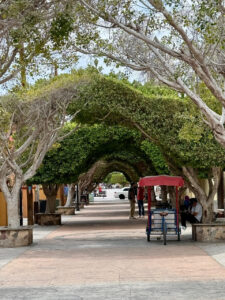
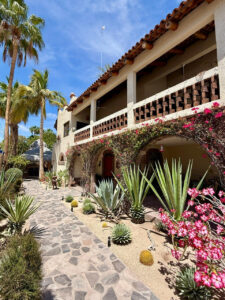

During our free time, many of us took a boat trip across the Gulf of California (Sea of Cortez) to Coronado Island, which is one of five islands in Loreto National Marine Park. Coronado Island is a former volcano. After touring lava formations and checking out the local sea lion, pelican, and Blue footed booby populations we landed on the beach and snorkeled with beautiful fish, spiny lobsters, sea cucumbers, urchins, and anemones, while we lunched on fresh yellowtail ceviche and burritos. At one point our guide instructed us all to get into the boat and we went offshore and were immediately surrounded by thousands of dolphins and two large male humpback whales that had been following the dolphins for the past week. It was a magical experience. As we made our way back to Loreto, our boat captain spotted ocean trash that we
picked up so that this biological hotspot was left better than we found it.
Northern planners departing for a fun “beach day” at Coronado Island and boat tour of the amazing Loreto National Marine Park.
Photo credit: Juan Borrelli, AICP, April 2025
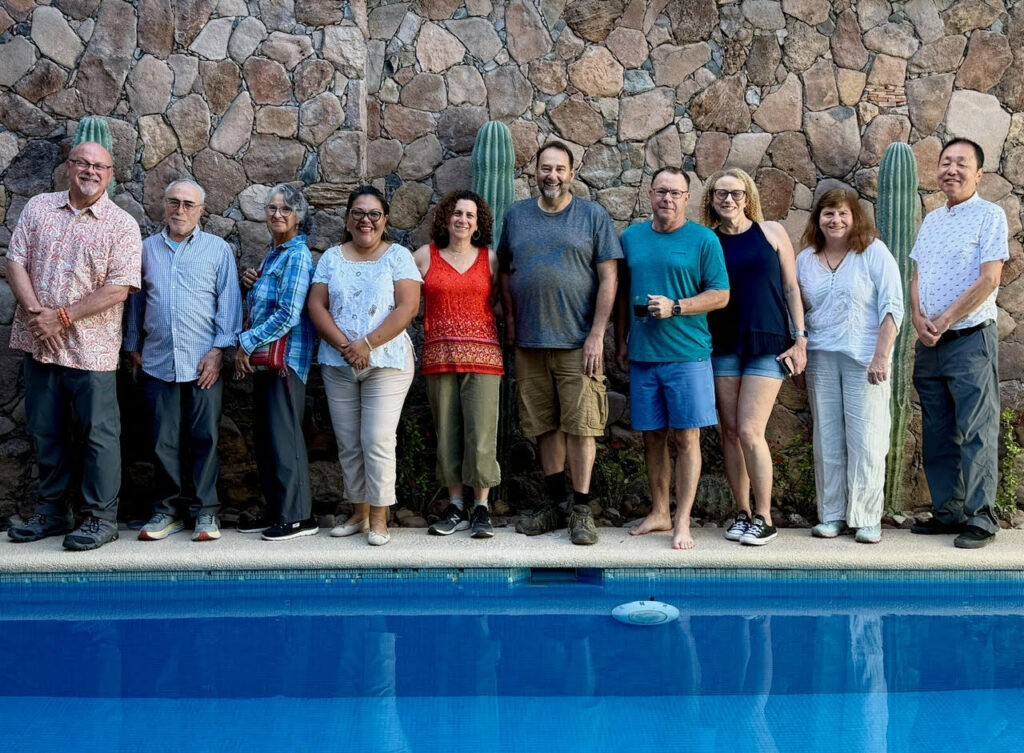
Eloisa Mendoza-Hinds, Lezly Ponce, Leslie Herzberg, Sam Herzberg, AICP, Kerry Salisbury, Joan Ryan, AICP, Elizabeth Tyler, FAICP, and Hing Wong, FAICP
Photo credit: Juan Borrelli, AICP, April 2025
